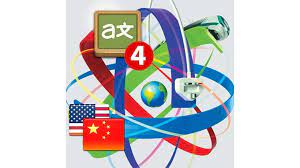
Translating your e-Learning content can open up your courses to a global audience and bridge the gap between different cultures and languages. However, the translation process is not just about converting text from one language to another. It involves a nuanced approach to ensure that the learning objectives are retained and that the content remains relatable and engaging for learners from diverse linguistic backgrounds. Here are four essential considerations to keep in mind when embarking on this journey:
1. Cultural Context: Every culture has its unique set of values, idioms, and customs, which means that direct translations often don’t resonate or can be misinterpreted. To avoid cultural faux pas, it’s important to adapt the content to fit the cultural context of the target audience. This process, known as localization, goes beyond translation to include changes in imagery, color schemes, symbols, and references that align with cultural norms and sensibilities.
2. Learning Objectives: The primary goal of e-Learning is to achieve specific learning outcomes. When translating content, it’s crucial that these objectives are preserved across languages. Terminology and instructional language should be carefully selected to maintain clarity and effectiveness. Sometimes, this requires collaboration with subject matter experts who are native speakers of the target language.
3. Technical Considerations: E-Learning courses often include interactive elements like quizzes, simulations, and multimedia content. Translating these components requires technical expertise to ensure that they function correctly in all the languages offered. Additionally, different languages occupy different amounts of space on screen; for example, German text tends to be longer than English text. Make sure your design can accommodate these variations without compromising usability.
4. Legal Compliance: Depending on your industry and target market, there may be legal requirements related to e-Learning content translation. For instance, certain terminology may need to be used to adhere to local regulations and industry standards. Be informed about these requirements in each region where you intend to offer your courses to ensure that your translated content is compliant.
In conclusion, translating e-Learning content is a complex endeavor that demands attention to cultural nuances, learning objectives, technical aspects, and regulatory compliance. By considering these factors thoroughly before starting the translation process, you can enhance the effectiveness of your e-Learning courses across diverse linguistic audiences and ensure a smooth learning experience for all participants.
